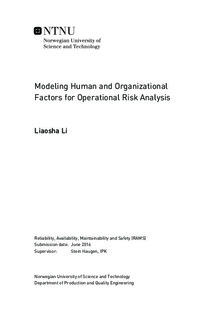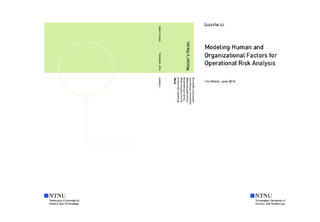| dc.description.abstract | In terms of accident sequences in the offshore oil and gas industry, technical factors have been
focused on the risk analysis area widely. However, there are still accidents and losses occurred
frequently. To understand the impact of other factors on accident sequences, this thesis focuses
on human and organizational factors instead of technical factors. The aimis to provide readers
a method about how to model human and organizational factors of offshore lifting operation
by a case study. Firstly, the risk model consists of Event Tree, Fault Tree and Bayesian network.
Then, to measure the risk influence factors in the model, potential indicators are identified by
researching the literature information. Next, there is a comparison and evaluation about how
to model non-linear effects by Barrier and Operational Risk Analysis and Bayesian conditional
probability. We predict that the Bayesian method is a more correct way to model non-linear
effects. However, regardless of which method, the biggest challenge is how to obtain available
datasets since there is no suitable datasets covering human and organizational factors. Thus,
the further work will still focus on collecting reliable datasets. | |

